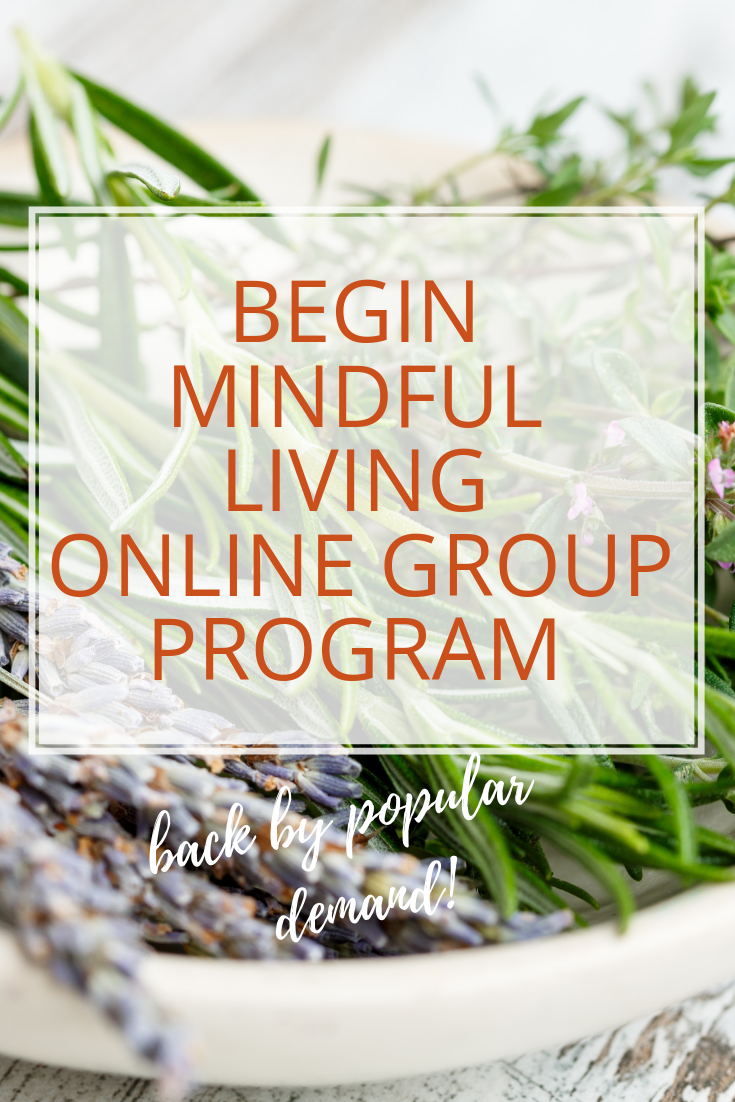
Mindfulness is the skill that seems custom-designed for modern life – so it’s popular. I can’t tell you how many books I saw (many from new graduates of mindful meditation courses) – at the most recent Academy of Nutrition & Dietetics (AND) conference. The more the merrier, really – all attempts at helping people begin mindful living are welcome!
I’m sure you’ve heard about the fascinating studies that suggest the simple (but not easy) practice of mindfulness helps with nearly any chronic condition, from stress to diabetes. True. But, you have to practice regularly, and I do think you have to practice reasonably well (not to be confused with perfectly – intention counts). For bet effect, you aim is to let go and be deeply and completely absorbed in what you are doing. I’m in the camp that thinks that mindfulness is a little more than just paying attention to what you are doing, though paying attention is a marvelous thing.
Here is a fun and easy solution to that tricky problem – each season, I hold an interactive online group called Begin Mindful Living. It’s been a hit! Because it works.
So, what is mindfulness?
Mindfulness – a meditative practice of focusing on what happens moment to moment with an attitude of non-judgmental awareness – seems like medicine for what ails us in modern life. It can begin to change us from the inside out.
In the past couple decades we’ve learned a lot more about just how this happens. There are short -term neurological mechanisms, and longer term genetics at play in the inside-out change of mindfulness. There are also mindset changes that, over time, reinforce the primary two mechanisms of neurobiology and genetics.
Why it can be so hard to start & maintain?
Mindfulness is a way of being. It’s a big shift in how you approach life. I think of the things you do in life – your habits and choices – as a flowing river. You flow along, doing what you do. When you begin to practice mindfulness, it’s like putting an oar in the water – it starts to make waves. It takes energy and skill and determination to keep it going. Practice. That means it’s easy to give up when you don’t see quick benefits. It’s easy to give up when it gets a little challenging.
Community to the rescue!

That’s why it’s great to launch mindful living in a group under the guidance of a skilled facilitator. Having the touchstone of others that will motivate you to try try again catapults the likelihood that you’ll keep it going. That you’ll press through when things get tougher.
Now, a word about online groups. I’ve given a number of interactive webinars for national health organizations, and conducted several of my own online groups. I love the magic that happens in groups and it’s the center of the work I do. There have been some recent advances in online interactivity that – while there is nothing like face-to-face – do the trick to connect you with others. You can see them, you can speak to them. It is an online kula – an online gathering. Overall, for the cost and time, it’s awesome.
Begin Mindful Living Online Group
I love this group!
Here is an easy way to launch mindful living that focuses on your self-care. Self-care is anything you do to do well by your whole being. It’s everything from making a balanced choice for breakfast – then enjoying every sensory bite of it; to taking a slow mindful walk in nature as you breath and receive the beauty of your surroundings.
I’ve begun to do a 4-week session every season, and our summer offering goes off between July 18- Aug 8th, Thursday evenings at 6:30 pm EST.
Join us!
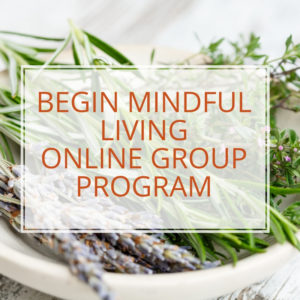
Each session will have a theme and your learning will progress over the month. One week before each session, you will receive a tip sheet with an introduction of the topic, an easy suggested practice and a journaling question.
Week 1: Intention & Mindful Practice
- Get clear on why, and begin the experiment with easeful practice.
Week 2: Mindful Self-care
- Health care IS Self-care. It’s for everyone, even you.
Week 3: Mindful Relationships
- Others in our lives give us our greatest opportunity to practice!
Week 4: Take it Forward into Life
- Clarify what you’ve received, and set intention for moving forward.
Each week, we’ll discuss overcoming challenges!
I so look forward to seeing you in our mindful living kula! Here’s more information.
Ready to sign up? Sign up now.
Have questions? Ask away.

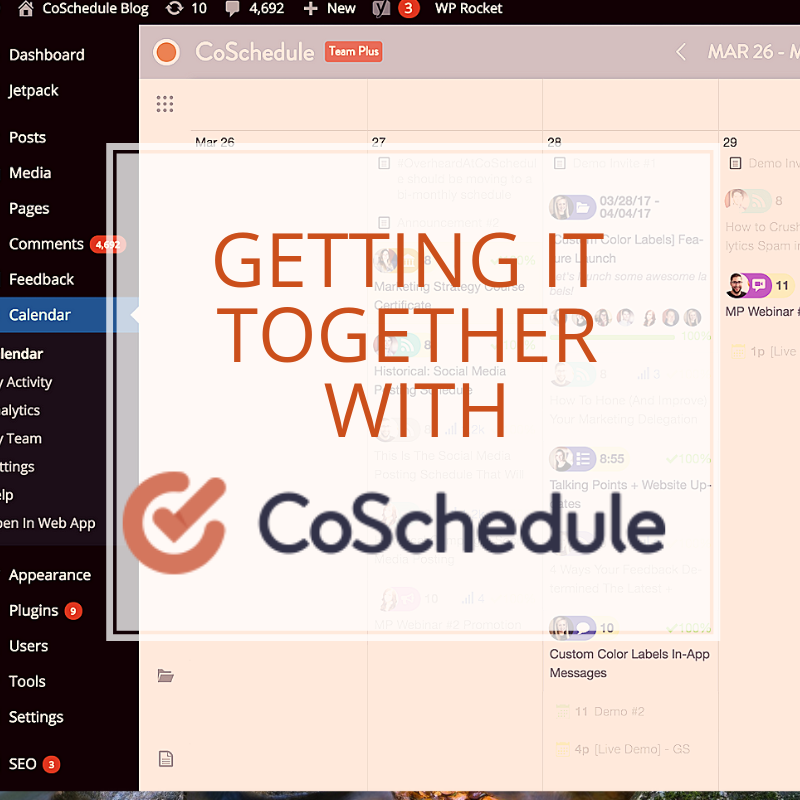
My first sponsored post – I am writing this review to reduce my subscription to a marketing tool that has the promise of helping me get it together to get the word out about my work (books, workshops and practice) with a bit more aplomb. If you follow the links in this post and decide to try coschedule too, I’ll get a little discount to my subscription.
Slow but sure. So far so good.
The Promise
The promise of Coschedule is that all my communication will be integrated – my monthly newsletter, weekly blog, and daily social activity will all be singing like a choir in tune. So that people – my people – my online tribe – will gather around my excellent teaching and together we will change this world. Influencers will gather about me, oohing and aahing. The perfect brands will also gather – the brands my readers may actually want, begging me to somehow get them in front of my readers.
Current State of Affairs
OK, phew. I used Coschedule for about a month before I took a pause to polish up an approaching retreat. In that time, things got started – not quite as quickly as I’d wished, but I did move forward. There was a bit of education as to how to think. Now, I have a MS in Communication and do have a marketing mindset, but this was different – thinking in terms of everything I do in terms of a campaign, or defining into some other communications thing, was a little next-level for me. I know I need to go there – it’s the natural next step for my blog and teaching. But, like life itself, it’s a process.
I’m excited by the possibilities of Coschedule, and can see the outline of how it works. Much of the learning within the app is geared toward team communication, and at this writing I am a solo entrepreneur looking to this app to be a certain type of automated assistant. As I begin to work with more organizations this may change and I guess it’s good to know that the app can expand as I grow, but right now, finding just the support that helps me fast-track what I am looking for is…not yet found. Taking a little more time and focus than I’d hoped. But, I’m back from my international travel and ready to dive in again.
So, I am going to try it – at this writing, I am thinking I’ll experiment with it for a year. But, it’s got to make me feel better (and save me time and mind-space) within a couple months of giving it a good try. I’ll measure my success in how well I reach new people who resonate with my work, how much my list grows, books sell, private practice fills, and how well my (under development) courses grow. Got it? I am going to watch and adjust and aim to grow. Hoping Coschedule helps me – and helps you.
Want to check it out? If you use this link, I will get a small discount on my subscription.
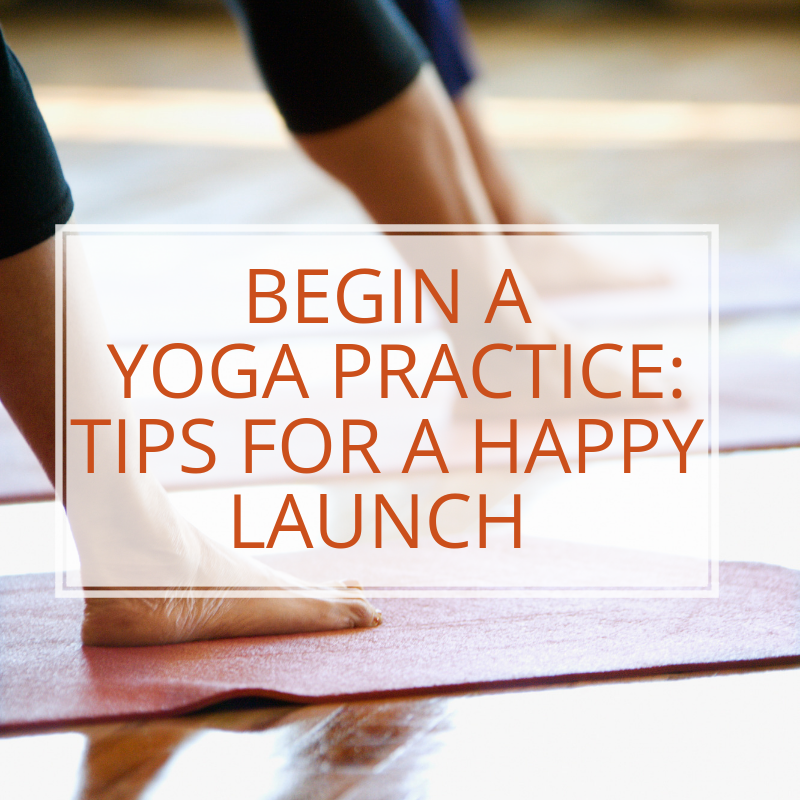
Thinking of adding yoga practice to your lifestyle? Lucky you! The first exposure of yoga is a profound experience (but for those who have a poor first match, a decidedly not-so-profound).
Here are some tips for what you can do to increase your odds of having an enjoyable and beneficial first experience as you begin a yoga practice.
1. Know yourself.
Your age, fitness level, and relative interest in physical or spiritual development will all influence your best class choice. If you are 50 and not in great shape, a level 2 Ashtanga class may be stressful and painful enough to turn you away from yoga forever. A gentle Kripalu class, however, may start you on the path to actually enjoying the Ashtanga class once you have some experience under your belt.
2. Start slow.
Choose a class that seems easy and doable first, and then progress to more strenuous styles or more advanced classes after you have learned a few basics. Learning the basics of how the body works in yoga, and how to do postures safely as you move deeper, is essential to being able to sustain a long-term practice. Please don’t skip that step! Many studios offer a series of basic classes.
3. Learn a little yoga lingo.
If you are young and fit, more active styles of yoga may be a great introduction to the practice. These include Ashtanga, Bikram, Vinyasa, and Power styles. If you are older or less physically active, begin with Kripalu, gentle Hatha (usually a blend of styles ), Viniyoga, or another gentler style. Yin yoga and Slow-flow yoga tend to be deep and meditative with longer holdings. If you enjoy an intellectual approach, you may enjoy the Iyengar style with its precise alignment and detail. Kundalini yoga features chanting and song, lots of fiery breathing, and postures which can be scaled up or down to match your physical ability. Ananda, Shivananda, and Integral yoga tend to feature spiritual development more than postures. You will, however, likely hear some yoga philosophy in any style of yoga, depending on the background and preferences of your teacher.
4. Chat with your teacher.
Here is a list of questions, excerpted from my book Every Bite Is Divine, (p 140), that will help you get to know your teacher better:
- What type of yoga do you teach?
- Do you work with individuals with medical issues or special needs?
- How long have you been studying yoga?
- How long have you been teaching?
- Do you have students like me (e.g., unfit, overweight, disabled, or with other issues) in your classes?
- Do you do individual instruction?
- How much does that cost and what would I get out of that?
5. If the first match doesn’t work, try try again.
Don’t be discouraged if you do not enjoy your first class. Try several before giving up your quest.
Here is an excerpt from Every Bite Is Divine (p 58) on beginning a yoga practice:
Before launching a new health regimen, talk it over with your physician. If you have an existing medical condition, work with your health team to adapt this work to honor your medical needs.
Professional yoga instruction is recommended for beginners. Wear loose, comfortable clothing that does not inhibit movement for practice. Find a quiet space large enough to stand with wide legs and to move your arms in all directions. A towel or yoga mat and a cushion or blanket can help make you more comfortable.
Principles for safe yoga practice include moving slowly and with awareness, maintaining smooth, easy breathing through the nose unless otherwise instructed, and not straining to achieve a position. Your yoga practice is a time to pay attention to your physical abilities and limitations and to make compassionate adjustments accordingly.
Please note that there are several types of yoga postures not recommended for an overweight body just beginning to practice. For example, inversions (going upside-down) facilitate the cleansing processes of the body, which is of particular benefit to those with hypo-digestion (slow digestion in relation to appetite) and the resulting buildup of body mass, toxins, and so forth. But the primary inversions of yoga—headstand and shoulder stand—can be injury-inducing for beginners with excess body weight and low muscle strength. So, if you are overweight, especially if you are not regularly physically active, you may need to adjust postures in order for them to be safe and beneficial. But, no matter who you are, each asana (posture) may be done safely with skillful adjustments. Working with a skilled instructor will help you learn how to make inversions and every other yoga posture safe and beneficial. Enjoy! It requires awareness and an attitude of taking your time to cultivate a beneficial practice.
If you are not regularly physically active, begin slowly so that you prevent injuries related to overdoing it. One yoga principle says that practicing for 10 minutes every day is preferable to practicing for 3 hours once a week. It’s showing up for regular daily practice that holds the magic.
A yoga practice usually contains a period of centering or settling down and turning your awareness inward, warming up or preparing the body for practice, a period of asana (physical postures) with pranayama (awareness to breath and energy movement), and relaxation/integration. There is, however, no “recipe” for a practice, and the elements listed often blend together. A period of meditation often follows a yoga practice.
May you have a life-long yoga practice that leads to happiness, health and your own true self.
Namaste.

I never met a mushroom I didn’t like, and I’ve had the pleasure of quite a few. It’s what inspired me to create my Hungarian-inspired Mushroom Soup Recipe.
If you ever get the chance, take a mushroom walk with the Boston Mycological Club(or your local club). They are a perfect collection of culinary, botany and sensation-seeking enthusiasts. When I went, we found baskets full of colorful beauties, then using field guides and spore patterns (the definitive method to differentiate friend or foe from a safe-to-eat perspective), we identified, divided up and took home our bounties for happy times of all sorts.
Gathering mushrooms from the wild is getting ever more popular, but I don’t do it because even though I’ve had some experience with my mycological friends, every year even expert mushroom collectors eat the wrong fungi and that’s it – they can kill you. There are such a phenomenal range of cultivated mushrooms now available, I suggest sticking with and enjoying that.
I love the mushrooms, dill, and sour cream that frame Hungarian mushroom soup. If you can find a good local organic grass-fed sour cream, then by all means, use that (grass-fed dairy has a more favorable lipid profile as well as being easier on the earth relative to its mass-market cousins). If you are dairy-free, you can substitute a bit of soy milk plus an extra squeeze of lemon to approximate the tang you’ll miss from yogurt or sour cream.
Here I’ve aimed to boost the nutrient density by loading up on herbs – both dill and parsley, as well as other vegetables, and lightened it up with yogurt rather than sour cream. I found that when I used this quantity of herbs, I needed to blend the finished product – herbs are so delicate that when they are cooked like this in a soup, they need to be blended or finely, finely chopped or their texture just isn’t what you want it to be.
Hungarian-inspired Mushroom Soup Recipe
I love the mushrooms, dill, and sour cream that frame Hungarian mushroom soup. If you can find a good local organic grass-fed sour cream, then by all means, use that (grass-fed dairy has a more favorable lipid profile as well as being easier on the earth relative to its mass-market cousins). If you are dairy-free, you can substitute a bit of soy milk plus an extra squeeze of lemon to approximate the tang you'll miss from yogurt or sour cream.
- 1 - 16 oz package organic mushrooms
- 2 Tbsp olive oil
- 3 large carrots
- 1/2 yellow onion sliced & cubed
- 1/2 medium yellow turnip peeled and sliced
- 2 cups organic chicken or vegetable stock
- about 1 cup fresh dill chopped
- about 1/2 cup fresh parsley chopped
- 2 Tbsp organic grass-fed yogurt or sour cream
In a heavy soup pot over medium heat, sauté onions in olive oil until translucent.
Slice carrots, and clean and slice mushrooms, and slice turnip, discarding any waxy covering it may have. Add these veggies to the pot and sauté for about 10 minutes, stirring occasionally to prevent sticking.
Add stock and simmer 45-60 minutes.
Meanwhile, chop herbs.
Add herbs and yogurt or sour cream.
If necessary, cool and run through a blender for a smooth and creamy texture.
Enjoy!
Looking for more delicious and healthy soup recipes? I highly recommend my Wild Mustard Asparagus Soup!
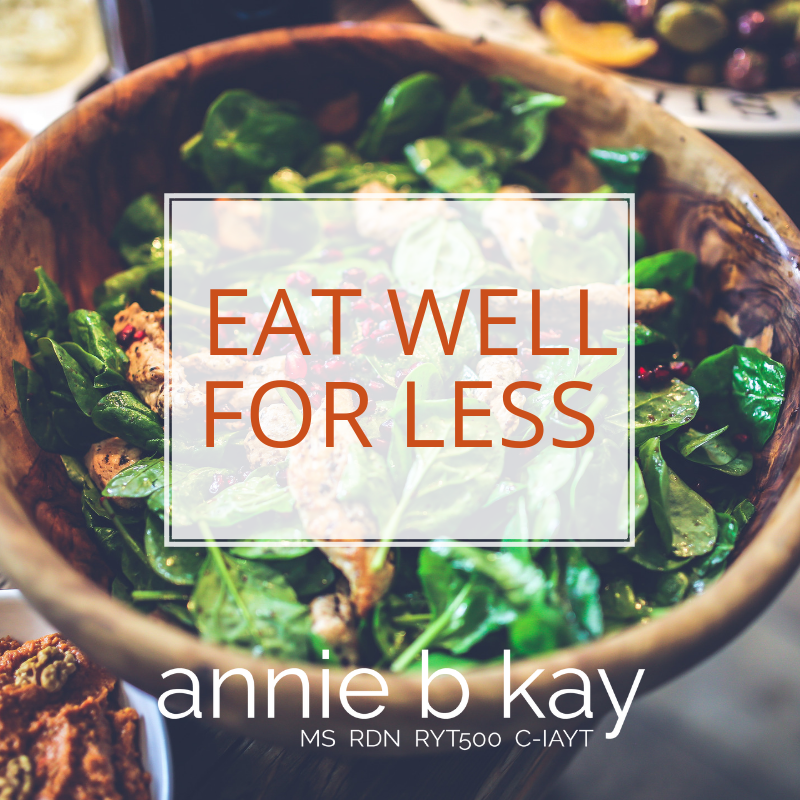
Quality food and produce – organics, artisanal, delicious – is more widely available than ever before. Yet when I check out from my whole foods grocery – especially when I’m preparing for a special holiday or family dinner, I imagine my father (a rural farmer cash-on-the-barrel sort of guy) fainting dead away at the grand total. Yipes! The price of high-quality (like organic grass-fed) meat or dairy, and fresh produce can take your breath away. You can eat well for less.
It takes some time and effort, but once you get into the swing of the practice, it’s just how you do it. The nutrition and taste benefits are very worth the effort.
If you feel the desire to eat high-quality food, but you aren’t independently wealthy, here are 7 ideas to help you eat well on a budget:
1. Try mindful eating.
Many Americans simply eat too much – be it healthy food or not. But just how much is enough? We’re designed to know. Mindful eating can help you find out how much food fills you up and gives you energy throughout the day. In fact, mindful eating is a practice that can help you turn down the external messages about what and how much to eat, and to tune in more deeply to your internal guidance system.
You can experiment by becoming a little more aware of the portion sizes you eat, and use mindful eating to help you experiment with just how much is enough. It’s a real sweet spot – adequate without over nor under-doing eating. It’s a practice for sure, and we humans by nature seem to over- or under-do it. So, if you struggle with this, you are not alone! Be patient and keep practicing.
How about an experiment – quality over quantity?
Begin by experimenting with mindfully eating various foods – from treats like designer chips, whole foods take-out, gourmet pizzas and stevia sweetened sodas to more healthful choices like fresh vegetables and fruit, beans, nuts and whole grains. See how different foods make you feel, and how much seems to be enough to satisfy and give you energy through the day (I know, easier said than done). Eating lightly (and for some, passing on snacking) can be both healthful and cost-effective. The practice of mindful eating is a great place to begin to explore just what eating lightly means for you.
2. Enjoy plants.
If you have more than one serving of animal protein each day, you may be healthier and more frugal to look to plant-based protein to replace some of the meat and dairy you’re eating. Need some ideas on a delicious way to focus on plant fare? Check out my recipe page, and my friend The Veggie Queen, who dedicates her working life to helping you enjoy more plants easily.
3. Consider a CSA or community food CO-OP.
Cut out the middleman and ensure the freshest local produce makes it into your kitchen all season long through a direct relationship with a local farm. To get stared check out Local Harvest. They will tell you how to get into the mindset, prepare to join, and help find your nearest community-supported agriculture (CSA) farms and CO-OPs.
4. The bulk food aisle (or discount website) is your friend.
Get a break on nuts, spices, whole grains and just about everything beyond fresh produce. If you don’t live near a grocery store that offers bulk staples, of course the internet marketplace is there wherever you are. The Spruce has a good article on their favorite online grocery sites.
5. Browse your market’s circular.
If you are so inclined to browse your supermarket’s circular, you really can shave a lot off your weekly food costs. My husband (astonishingly) does this as a practice – he plans our shopping around the meat and seafood that is on sale – and he is truly amazing at it. The deals he gets are phenomenal! You do have to be aware that items on sale might not be the most healthful, so you need to practice discretion here.
6. Organic online coupons? Yep.
Check out All Natural Savings – a gal dedicated to online couponing – to get you started. Whole Foods also has a weekly deals and sales page. So many ways to use them to eat well for less.
7. Keep it all in perspective.
There’s a certain new math – a longer-term economics we need to consider when we think about the higher cost of clean whole food. That new equation is hidden beneath cheap subsidized corn, sugar, meat and dairy. As a nutritionist for the past 25 years I know that this cheaper refined food is responsible for a world of disease and pain. In my practice I see people improve their health every day through committing to higher quality nutrient-dense, low chemical load food. Most people feel better right away when they move away from the standard American diet and learn to make small choices toward health while enjoying what they eat and feeling great regardless of the number of the scale. The benefits continue to build over time with longer, healthier lives.
When it comes to quality food, no one can eat perfectly all the time unless they have limitless income, their own farm and a small team of vegetable choppers at the ready.
So, do what you can to eat well for less, and let the rest go. Small changes can add up, over time, to transformation.










